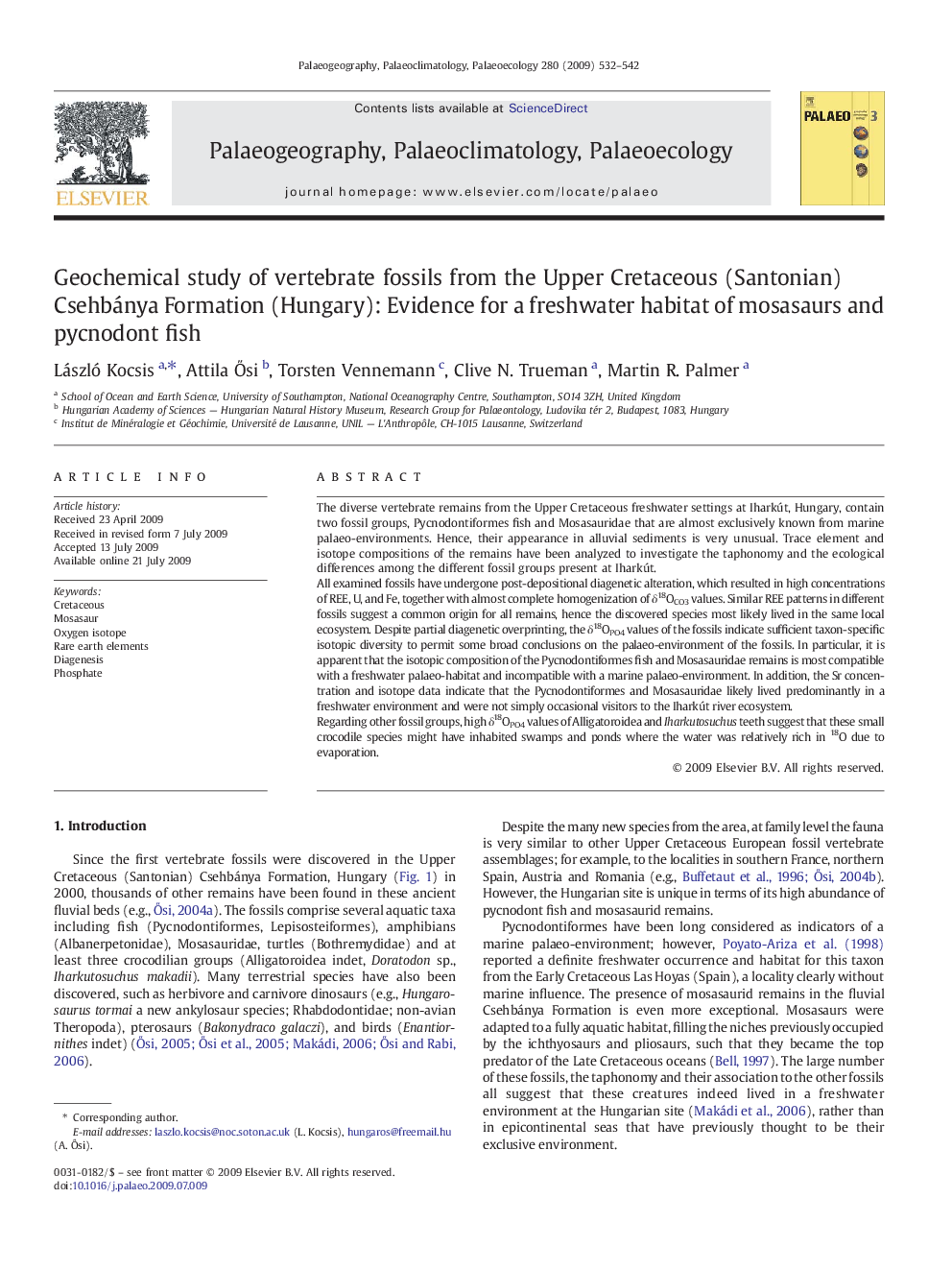| کد مقاله | کد نشریه | سال انتشار | مقاله انگلیسی | نسخه تمام متن |
|---|---|---|---|---|
| 4468011 | 1622296 | 2009 | 11 صفحه PDF | دانلود رایگان |

The diverse vertebrate remains from the Upper Cretaceous freshwater settings at Iharkút, Hungary, contain two fossil groups, Pycnodontiformes fish and Mosasauridae that are almost exclusively known from marine palaeo-environments. Hence, their appearance in alluvial sediments is very unusual. Trace element and isotope compositions of the remains have been analyzed to investigate the taphonomy and the ecological differences among the different fossil groups present at Iharkút.All examined fossils have undergone post-depositional diagenetic alteration, which resulted in high concentrations of REE, U, and Fe, together with almost complete homogenization of δ18OCO3 values. Similar REE patterns in different fossils suggest a common origin for all remains, hence the discovered species most likely lived in the same local ecosystem. Despite partial diagenetic overprinting, the δ18OPO4 values of the fossils indicate sufficient taxon-specific isotopic diversity to permit some broad conclusions on the palaeo-environment of the fossils. In particular, it is apparent that the isotopic composition of the Pycnodontiformes fish and Mosasauridae remains is most compatible with a freshwater palaeo-habitat and incompatible with a marine palaeo-environment. In addition, the Sr concentration and isotope data indicate that the Pycnodontiformes and Mosasauridae likely lived predominantly in a freshwater environment and were not simply occasional visitors to the Iharkút river ecosystem.Regarding other fossil groups, high δ18OPO4 values of Alligatoroidea and Iharkutosuchus teeth suggest that these small crocodile species might have inhabited swamps and ponds where the water was relatively rich in 18O due to evaporation.
Journal: Palaeogeography, Palaeoclimatology, Palaeoecology - Volume 280, Issues 3–4, 15 September 2009, Pages 532–542